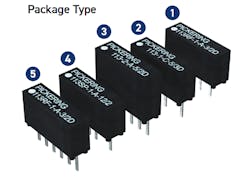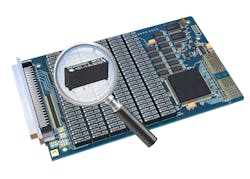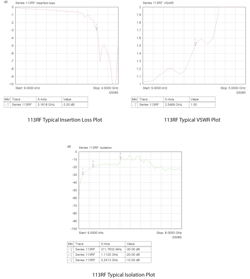Low-RF Coaxial Reed Relay Handles 3 GHz, Cuts Insertion Losses
Anyone who assumes that passive or electromechanical components are simple is either naive or inexperienced. Even a basic, functionally simple component such as a high-power, milliohm current-sense resistor is a sophisticated blend of physics, materials science, production subtleties, and test fixtures.
It’s the same with electromechanical, non-solid-state relays (SSRs). Although they have been around since the earliest days of electricity, EMRs are still widely used for many reasons. They range from tiny, small-signal units to ones that handle hundreds of volts and amps, and with multiple poles.
There’s a unique subset of the EM relay: the reed relay. Originally brought to mass production by Bell Labs in the middle part of the 20th century to provide the utmost in reliability for central-office switched circuits, these relays feature small size, a hermetically sealed contact enclosure, and other virtues. They’re still used extensively for everything from microvolt sensor signals to RF signal switching.
The Series 113RF SIL/SIP reed relays from Pickering Electronics offer a new miniature coaxial reed relay for high-frequency RF systems up to 3 GHz (Fig. 1). The basic “1 Form A” (SPST) 5-V version has a coil resistance of 500 Ω and can be driven by TTL-compatible or equivalent outputs. Other contact and coil variants are available as well, either as standard options or custom orders.
The relays measure 12.5 mm long, 3.7 mm wide, and 6.6 mm high, and they have a high packing-density stacking on 0.15- × 0.5-in. pitch. They feature a 2-mm spacing footprint, enabling them to be stacked at very high densities typical of automatic test equipment (ATE) systems (Fig. 2).
These reed relays are suitable for switching up to 10 W and 0.5 A. In addition, 1 Form A configurations (SPST normally open) are available with 3- or 5-V coils with coil resistances of 100 and 300 Ω, respectively. The company maintains that these small, screened reed relays are faster and smaller than conventional electromechanical relays, have a lower insertion loss, better dc capabilities than SSRs, and better hot-switching performance than microelectromechanical-machine-system (MEMS) relays.
At low levels, the typical life expectancy of Series 113RF reed relays is greater than 250 million operations. They employ the highest-quality instrumentation-grade reed switches with sputtered ruthenium contacts (think back to high-school chemistry: that’s symbol Ru and atomic number 44, a rare transition metal belonging to the platinum group of the periodic table) and are well-suited for automatic test equipment. (Talk about tiny details that make a difference: that type of ruthenium plating ensures stable contact resistance and longer life, while simpler electroplated rhodium plating results in higher, less-stable contact resistance.)
As these are coaxial, RF-optimized relays, the vendor provides graphs of insertion loss, VSWR, and isolation (Fig. 3).
When relays are widely spaced, the eternal magnetic field of the activation coils issues don’t generally cause problems. However, when the relays are stacked and packed to high density in applications such as ATE boards, the field of one coil may interfere with, and even desensitize, the activation field of an adjacent relay. For this reason, All Series 113RF reed relays feature an internal mu-metal magnetic screen to enable high-density stacking of relays without the risk of adjacent devices interfering with each other, resulting in inconsistent or faulty operation.
The nine-page datasheet gives details on all versions of the Series 113RF relays. Other collateral includes an informative table comparing the attributes of the Pickering designs with what they refer to as “typical” reed relays. Although undoubtedly somewhat biased, it nonetheless provides some genuine insight. If you’re not familiar with reed relays, they have a three-minute tutorial video:
The company also has a short video about this new series:



